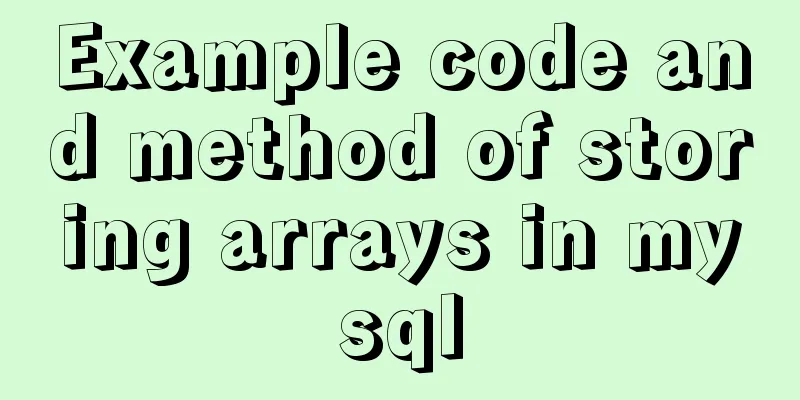Handwritten Vue2.0 data hijacking example

1: Build webpackSimply build the webpack configuration. Create a new folder and init it. Then create a new webpack.config.js file, which is the configuration file of webpack. Install some simple dependencies. npm install webpack webpack-cli webpack-dev-server -D Create a public/index.html and src/index.js file in the same directory as the export and entry files. jSimply configure webpack, in the webpack.config.js file:
const path = require('path');
const HtmlWebpackPlugin = require('html-webpack-plugin');
module.exports = {
entry: './src/index.js',
output: {
filename: 'bundle.js',
path: path.resolve(__dirname, 'dist')
},
resolve: {
modules:
path.resolve(__dirname, ''), path.resolve(__dirname, 'node_modules')
]
},
plugins: [
new HtmlWebpackPlugin({
template: path.resolve(__dirname, 'public/index.html')
})
]
}
Ok, after configuring webpack, we can start the topic. 2. Data hijackingIn v2, vue is instantiated through new Vue(el, options). We need to create a new vue file and unify the data hijacking method into vue. Create a new vue/index.js as the entry file for data hijacking.
import {initState} from './init.js';
function Vue (options) {
this._init(options); // Data initialization}
Vue.prototype._init = function (options) {
var vm = options; // Save the instance vm.$options = options; // Instance mount initState(vm); // Instance initialization }
Create a new init.js file to initialize the instance: Pay attention to a few issues during initialization: 1. Computed, watch, and data need to be processed separately. 2. Do not modify user-defined data directly. 3. The official designation of data as a function is to ensure that the component has its own scope and is not polluted. Direct access to the data function is not possible and requires automatic execution. Data can also be an object (this situation needs to be taken into account) 4. This method of obtaining data is through vm._data.xxx, but in Vue, data is not needed to obtain it, so it needs to be intercepted and rewritten here. 5. Internal reference types require recursion
function initState (vm) {
var options = vm.$options; // Get options
if (options.data) {
initData(vm); // Because computed and watch need to be initialized here, initialize data};
function initData (vm) {
var data = vm.$options.data; // Reassign data, do not change user-defined data
data = vm._data = typeof data === 'function' ? data.call(vm) : data || {};
for (var key in data) {
proxyData(vm, '_data', key); // Reassign the value of data};
observe(vm._data); //Observe the internal data}
Create a new proxy.js as the proxy layer:
function proxyData(vm, target, key) {
Object.defineProperty(vm, key, {
get () {
// Interception is done here: vm.xxx => vm._data.xxx
return vm[target][key];
},
set(newValue) {
// vm.xxx = yyy ===> vm._data.title = yyy
vm[target][key] = newValue;
}
})
}
export default proxyData;
Now that the access problem has been solved, we need to recurse the internal elements of data. obseve(vm._data); Create a new observe.js:
function observe(data) {
if (typeof data !== 'object' || data = null) return;
return new Observer(data); // If it is an application type, add an observer directly}
Create a new observer: observer.js
function Observer(data) {
if (Array.isArray(data)) {
// Processing array data._proto_ = arrMethods;
}
else {
//Processing object this.walks(data);
}
}
Observer.prototype.walks = function (data) {
let keys = Object.keys(data); // Get all the keys under data, and it is still an array for (var i = 0 ; i < keys.length ; i++) {
var key = keys[i];
var value = data[key];
defineReactiveData(data, key, value); // Each regenerates responsive data }}
Create a new reactive.js to handle objects and other responsive
function defineReactiveData (data, key, value) {
observe(value); // Then recursively apply to the child elements.
Object.defineProperty(data, key, {
get() {
return value;
},
set (newValue) {
if (newValue === value) return;
value = newValue; // trigger change }
}
)
};
Ok, the object data hijacking is handled here, and the remaining needs to deal with the array In V2, 7 methods on the prototype are rewritten to achieve data hijacking. Hijacking array: Create a new Array.js file:
import {ARR_METHODS} from './config.js';
// A collection of 7 array methods import observeArr from './observeArr.js';
var originArrMethods = Array.prototype,
arrMethods = Object.create(originArrMethods);
ARR_METHODS.map(function (m) {
arrMethods[m] = function () {
var args = Array.prototype.slice.call(arguments); // Convert class array to array var rt = originArrMethods[m].apply(this, args);
var newArr;
switch (m) {
case 'push':
case 'ushift':
newArr = args;
case 'splice':
newArr = args.slice(2);
break;
default:
break; };
newArr && observeArr(newArr);
return rt;
}
});
export { arrMethods }
observeArr(newArr): Arrays may also be nested, so the data needs to be observed.
import observe from "./observe";
function observeArr (arr) {
for (var i = 0 ; i < arr.length ; i++) {
observe(arr[i]); // Go back to observe.
}
}
export default observeArr;
Three: SummaryThe basic process is like this, it is not just as simple as object.defineProperty getting and setting data. Summarize the main process: (1): During initialization: save the instance and mount the instance. The data is initialized through the initState method. Here it is mainly data, and there are also computed and watch that need to be processed. (2): Call initData(); Reassign data, then execute data, modify the user's way of obtaining data attributes to this.xxx and observe(data) (3): When observing(data), you need to judge the data. If it is a reference type, you need to add an observer. At the same time, the observer determines whether the data is an array or an object. The object directly re-triggers object.defineProperty and re-observes the internal part. If it is an array, directly use the 7 array methods, and then continue to observe the inside of the array. The above is the details of the example of handwritten Vue2.0 data hijacking. For more information about handwritten vue data hijacking, please pay attention to other related articles on 123WORDPRESS.COM! You may also be interested in:
|
<<: Complete steps to install boost library under linux
>>: mysql 5.7.18 winx64 free installation configuration method
Recommend
MySQL 8.0 can now handle JSON
Table of contents 1. Brief Overview 2. JSON basic...
Nest.js hashing and encryption example detailed explanation
0x0 Introduction First of all, what is a hash alg...
How to quickly import data into MySQL
Preface: In daily study and work, we often encoun...
The benefits and examples of placing the site map at the bottom of the web page
In the past, almost every website had a sitemap p...
Example of implementing load balancing with Nginx+SpringBoot
Introduction to Load Balancing Before introducing...
Two ways to specify the character set of the html page
1. Two ways to specify the character set of the h...
MySQL column to row conversion, method of merging fields (must read)
Data Sheet: Column to row: using max(case when th...
Detailed explanation of Vue mixin
Table of contents Local Mixin Global Mixins Summa...
Linux file/directory permissions and ownership management
1. Overview of file permissions and ownership 1. ...
Use of MySQL DATE_FORMAT function
Suppose Taobao encourages people to shop during D...
Introduction to several ways to introduce CSS in HTML
Table of contents 1. Embed CSS styles directly in...
Use button trigger events to achieve background color flashing effect
To achieve the background color flashing effect, j...
Common tags in XHTML
What are XHTML tags? XHTML tag elements are the b...
Detailed explanation of the service problem reported by Ubuntu 20.04 using Xshell through SSH connection
1. I recently installed a new version of Ubuntu. ...
Regarding the problem of using webpack instructions in vscode showing "Because running scripts is prohibited in this system" (perfect solution)
When learning Vue, when I always use webpack inst...









